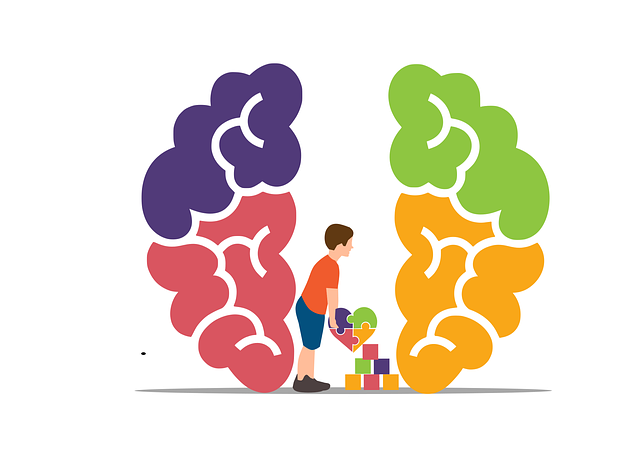Centennial Autism Spectrum Disorder (ASD) Therapy offers a revolutionary approach to stress management, addressing the unique challenges faced by individuals on the ASD spectrum. By creating tailored environments, teaching coping mechanisms, and leveraging engaging formats like podcasts, this therapy enhances emotional well-being and empowers clients with self-care routines. Incorporating CBT, mindfulness, and sensory-friendly practices, it reduces anxiety, promotes resilience, and educates the public about autism's complexities, thereby reducing mental illness stigma. This holistic approach creates supportive environments that prioritize physical, emotional, and social needs, fostering calmness and improving mental health for individuals with ASD.
“In today’s fast-paced world, managing stress is a vital skill, especially for individuals on the autism spectrum. This article explores comprehensive strategies for stress management tailored to those with ASD, focusing on the unique challenges they face. We delve into the profound impact of stress on this population and highlight the transformative power of Centennial Autism Spectrum Disorder Therapy. Through cognitive behavioral techniques, mindfulness practices, and holistic environment design, readers will discover effective tools to empower individuals with ASD in navigating and reducing their stress levels.”
- Understanding Stress and its Impact on Individuals with ASD
- The Role of Centennial Autism Spectrum Disorder Therapy in Stress Management
- Cognitive Behavioral Techniques for Coping with Stress
- Mindfulness and Relaxation Practices for Autistic Individuals
- Creating Supportive Environments: A Holistic Approach to Stress Reduction
Understanding Stress and its Impact on Individuals with ASD

Stress is a universal experience, but its impact can vary significantly among individuals, especially those on the Autism Spectrum Disorder (ASD) spectrum. For folks with ASD, navigating and managing stress often requires tailored strategies due to unique sensory processing differences and communication styles. Stressful situations might manifest as overwhelming sensory input or challenges in understanding social cues, leading to potential anxiety or distress. Recognizing these distinct needs is pivotal when designing therapy approaches for this population.
Centennial Autism Spectrum Disorder Therapy focuses on creating supportive environments that cater to individual preferences and strengths while teaching effective coping mechanisms. The goal is to enhance emotional well-being promotion techniques by empowering individuals with ASD to recognize and manage their stress responses. This may involve incorporating aspects of mental wellness coaching programs, offering sensory-friendly spaces, and even leveraging the engaging format of a Mental Wellness Podcast Series Production to discuss stress management topics in accessible ways that resonate with this audience.
The Role of Centennial Autism Spectrum Disorder Therapy in Stress Management

Centennial Autism Spectrum Disorder (ASD) Therapy plays a pivotal role in modern stress management strategies. This therapeutic approach is designed to address the unique challenges faced by individuals on the autism spectrum, offering tailored support for mental health and well-being. By focusing on sensory processing, communication skills, and social interaction, Centennial ASD Therapy contributes significantly to reducing anxiety and promoting resilience. It fosters self-care routine development, empowering individuals to manage stress effectively within their daily lives.
Beyond its direct impact on the spectrum community, this therapy also supports Mental Illness Stigma Reduction Efforts by educating the wider public about autism’s complexities. Cultural sensitivity is a cornerstone of such practices, ensuring diverse perspectives are considered. This inclusive approach to mental healthcare enables professionals to provide more personalized and compassionate care, integrating Self-Care Routine Development for Better Mental Health that respects individual needs and cultural backgrounds.
Cognitive Behavioral Techniques for Coping with Stress

Cognitive Behavioral Techniques (CBT) offer a powerful approach to managing stress and have proven particularly effective for individuals with Centennial Autism Spectrum Disorder (ASD). This therapy focuses on identifying and changing negative thought patterns that contribute to stress and anxiety. By challenging these thoughts and replacing them with more realistic, positive ones, CBT empowers individuals to cope better with stressful situations.
One of the key advantages of CBT is its practical application in daily life. It encourages the use of Mental Wellness Journaling as a tool for tracking thoughts, emotions, and behaviors, enabling individuals to gain insights into their stress triggers. Additionally, guidance on specific exercises, such as deep breathing and progressive muscle relaxation, can help prevent burnout and promote a sense of calm. Public Awareness Campaigns Development plays a crucial role in educating people about these techniques, fostering a better understanding of stress management and ultimately improving the overall well-being of individuals with ASD.
Mindfulness and Relaxation Practices for Autistic Individuals

For autistic individuals, managing stress often requires tailored approaches that cater to their unique sensory and emotional needs. Mindfulness and relaxation practices have emerged as powerful tools in Centennial Autism Spectrum Disorder (ASD) therapy, offering a holistic way to navigate and reduce stress levels. These techniques encourage self-awareness exercises, helping individuals recognize and accept their emotions without judgment. By fostering a deeper understanding of one’s internal state, mindfulness promotes a sense of calm and control, which can be particularly beneficial for managing anxiety.
Incorporating relaxation practices into daily routines can provide autistic folks with much-needed tools for self-soothing and confidence boosting. Techniques such as deep breathing exercises, progressive muscle relaxation, and guided visualizations offer sensory-friendly ways to unwind and find solace. These practices not only aid in immediate anxiety relief but also empower individuals to better cope with stressful situations in the long term.
Creating Supportive Environments: A Holistic Approach to Stress Reduction

Creating supportive environments is a holistic approach to stress reduction, especially for individuals with conditions like Centennial Autism Spectrum Disorder (CASD). These environments cater to multiple aspects of well-being—physical, emotional, and social—to foster a sense of calm and enhance overall mental health. For instance, designing spaces that encourage sensory integration can significantly help in managing stress levels. Strategies such as incorporating calming colors, natural lights, and soothing textures create an atmosphere conducive to relaxation.
Furthermore, promoting positive thinking and building empathy within these environments is crucial for CASD therapy. Simple practices like mindfulness exercises, gratitude journaling, and supportive peer interactions can prevent depression and foster a growth mindset. The holistic approach ensures that individuals not only learn stress management techniques but also develop coping strategies that are tailored to their unique needs, ultimately revolutionizing their ability to navigate life’s challenges.
In conclusion, managing stress effectively is a vital aspect of holistic wellness for individuals with Autism Spectrum Disorder (ASD). By understanding the unique impact of stress on ASD and employing evidence-based techniques like Centennial Autism Spectrum Disorder Therapy, cognitive behavioral therapy, mindfulness practices, and supportive environment design, significant improvements in overall well-being can be achieved. These strategies empower autistic individuals to navigate life’s challenges with greater resilience and enhance their quality of life.














